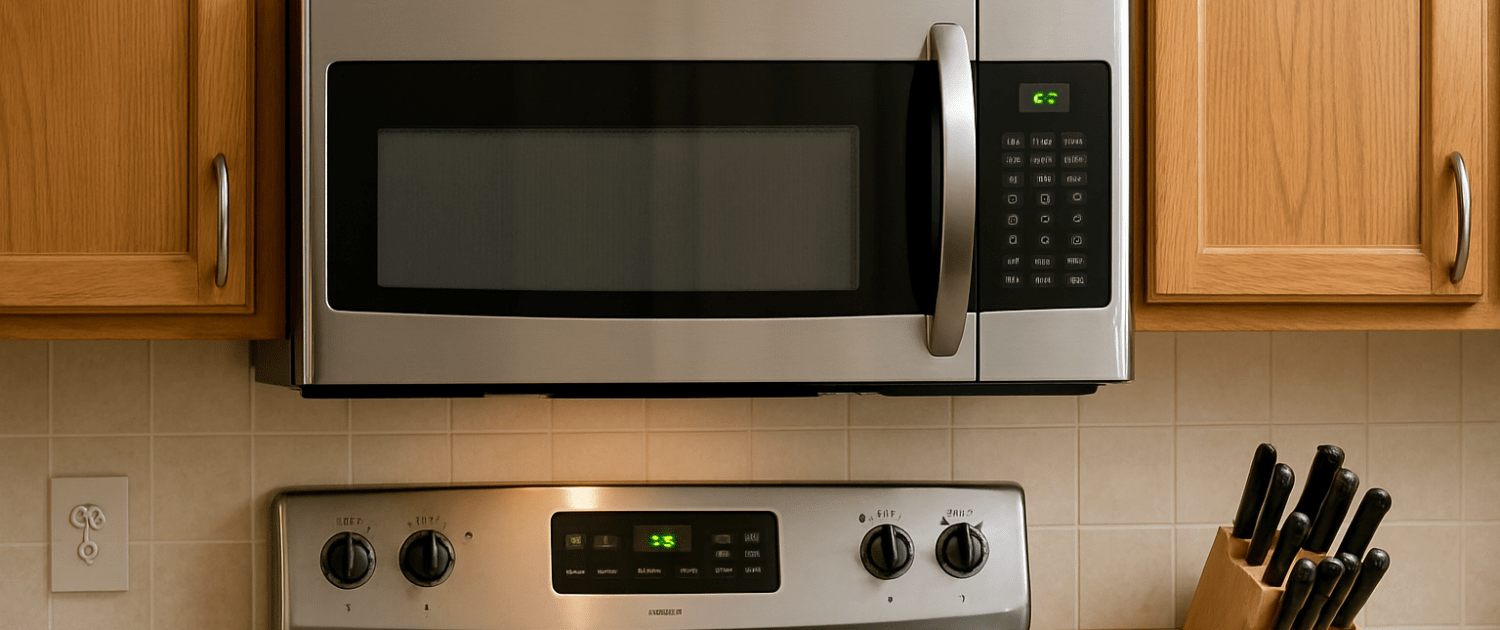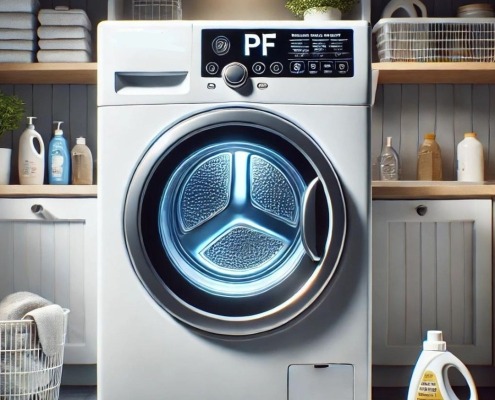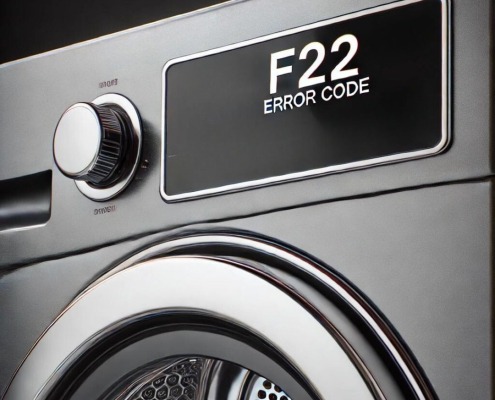What the F2H1 Code Means on Your Whirlpool Microwave
Steven E / Thursday May 8, 2025
Like any household appliance, microwaves are prone to technical issues and errors. Whirlpool brand microwave ovens for example may display an F2H1 error code that requires some troubleshooting to resolve. We’ll explore what this error means and provide a step-by-step guide to diagnosing and fixing the F2H1 Whirlpool microwave error.
If you find out that you need any replacement parts for your appliance while you’re troubleshooting, you can enter your model number at AppliancePartsPros.com to order them. Most orders arrive in just two business days, and we have thousands of free guides to show you how to install your new parts.
The information in this article may not apply to your specific appliance model. We recommend consulting your manufacturer’s documentation or contact us with any questions.
What does the error code mean?
On Whirlpool microwaves, the F2H1 error specifically indicates an issue with one or more of the membrane keypad buttons used to control the vent hood fan. The microwave control board interprets input from the keypad buttons to operate different functions and components. When a keypad button is stuck, it sends false input to the control board, prompting the F2H1 error display.
Some examples of range hood buttons on Whirlpool microwaves that could trigger an F2H1 error if stuck:
- Hood fan speed keys (High/Med/Low)
- Hood light key
- Vent fan auto/on/off key
- Night light key
If any of these commonly get stuck in the pressed position, the control board recognizes the faulty input of the range hood button and displays the F2H1 code on the control panel. The issue is with the keypad itself rather than the control board in most cases. This is the same case with any other F2 errors which relate to keypad errors.
Safety precautions
When working on any appliance, remember to keep safety first. Here are some tips to keep in mind:
- Always power off and unplug your appliance or switch off the circuit breaker before attempting any maintenance or replacement work. This keeps you safe by preventing any risk of injury from electric shock.
- Wear insulated work gloves to protect your hands from sharp metal parts, pinching hazards and debris.
- Take your time and don’t rush while working to prevent accidents and personal injuries.
- Work in a well-lit area so you can clearly see and access the interior parts.
- Clear your workspace of clutter and other obstacles. Keep children and pets away from the work area.
- Never work on internal parts with bare wet hands. Make sure the work area is completely dry.
- Check your user manual to see if there are specific installation or safety instructions for your part or appliance.
- Be gentle when handling or removing parts. Excessive force might damage the appliance or cause injury.
- Wear safety glasses when working with chemicals, dust or cleaning large debris to prevent injury.
- If the appliance has recently been used, give it plenty of time for any heating parts to cool down before working on it.
- Take pictures or make a note of wiring terminals or other connections before disconnecting to prevent any problems with reassembly.
- When working with wires, avoid touching any exposed wires or terminals. If you need to touch a wire, use a non-conductive tool or wear insulating gloves to prevent electrical shock.
Microwave safety
Microwaves contain high-voltage parts and have the capacity to store voltage even when they’re disconnected from a power source. Please be very careful while working on a microwave’s internal parts to avoid electrocution, which has the potential to cause serious injuries or death.
- Always unplug the microwave before troubleshooting or making repairs.
- Discharge the high-voltage capacitor before working on high-voltage parts to eliminate the risk of electric shock. Do not continue if you are uncomfortable or unfamiliar with this process.
- Never attempt to run the microwave while its casing is open or when internal parts are exposed. Always completely reassemble the microwave before testing or using it.
- Never attempt to bypass any microwave safety features.
- Never run the microwave empty. Use a glass of water for test running.
- Removing a microwave from over the range is a two person job due to the weight and potential for damage. Follow manufacturer installation instructions for reinstallation over the range after repair.
Discharging a microwave capacitor
IMPORTANT: Carefully follow the correct handling and discharge procedures since exposure to the voltage levels inside a microwave can potentially cause severe injury or death. Prioritize safety at all times and follow the instructions and recommendations provided by the manufacturer. If you do not feel comfortable discharging a capacitor, do not attempt to do it yourself.
- Unplug the microwave from the power source.
- Grab a screwdriver with good insulation on the handle to protect against electric shock.
- Gently touch the insulated screwdriver blade to one terminal of the capacitor.
- Slowly and gently slide the screwdriver forward until it reaches the other terminal of the capacitor. Hold it there for a few seconds. This discharge process often results in a loud and startling ‘POP’ sound.
- Repeat the process to create a short circuit between each capacitor terminal and the chassis (bare metal mounting plate surface). If the capacitor has three terminals, use the same method.
Steps to resolve the error
With proper precautions, you can troubleshoot and fix an F2H1 keypad error on your Whirlpool microwave using these steps:
Step 1: Unplug the microwave
- First and most importantly, unplug the microwave oven from its power source or switch off the circuit breaker supplying power to it.
- This de-energizes the unit so you can safely inspect the keypad.
Step 2: Remove the outer panel
- Refer to the microwave’s service manual for detailed instructions to remove the right, left, or rear outer cabinet panel to access the internal components and control board area.
- In most cases, removing the right panel is needed to reach the membrane keypad.
- Detach any retaining screws or snap fasteners to remove the panel. Avoid damaging wire harnesses.
Step 3: Locate and inspect keypad
- Once you have the right outer panel removed and access to the control board area, you can inspect the membrane keypad for issues.
- The keypad is typically attached directly to the relay control board itself. It will resemble a plastic sheet overlay with printed buttons for the various microwave and vent hood functions. Under this button sheet is a circuit that presses against the control board contacts when buttons are pushed.
- Closely examine the membrane keypad for any buttons or keys that appear permanently depressed or stuck in the down position. Normal keypads will have all buttons in the default released position.
- Press and release each key on the membrane pad one by one while observing the button action. A properly functioning key should snap back up immediately when released. See the following for comparison:
- Normal key response: The button quickly springs back up after being pressed down. No delay in return.
- Sticking key response: The button remains partially or fully depressed after being released. Slow to return upward.
- Pay particular attention to keys controlling the vent hood fan speeds, hood light, and other fan functions. The F2H1 error is triggered specifically by an issue with the keypad buttons related to the hood operation.
- If you discover any keys that are slow to return back upward or a jammed key this points to a fault with the contacts or circuit matrix underneath that button on the keypad. Attempting to exercise the key may help resolve minor sticking issues. Otherwise, the entire keypad will need to be replaced if any keys exhibit sticking behavior.
- For any keys that appear stuck, attempt to free them up by pressing them multiple times in a row. This repetitive motion can help reseat the internal contacts and restore normal operation. Recheck after exercising the key to see if the sticking is resolved.
Step 4: Replace defective keypad
Once you’ve confirmed that one or more of the membrane key buttons is sticking and not functioning properly, replacement of the entire keypad is required to resolve the F2H1 error code.
- Unplug ribbon cable: Carefully detach the thin ribbon cable that connects the old keypad to the control board. This connector can be delicate. Pull straight out on the cable to unseat it.
- Remove adhesive backing: The old keypad is held in place with adhesive strips or tape on the back. Gently peel these away to detach the keypad from the control board surface.
- Clean control board: Use rubbing alcohol and a towel to clean the now-exposed area of the control board where the keypad sits. Remove any adhesive residue.
- Install new keypad: Peel away the adhesive backing strips on the new replacement keypad. Align it correctly onto the control board and press down firmly along all edges for a solid connection.
- Reconnect ribbon cable: Plug the ribbon cable back into the socket on the control board. Make sure it is fully seated for a proper electrical connection.
- Reassemble oven: Carefully replace the outer cabinet panel, screws, and other parts you removed earlier to access the control board area. Consult the microwave service manual.
With the new membrane keypad installed, the F2H1 error should be cleared after powering the microwave oven back on. The key buttons will now have a proper response.
More information
Thank you for reading! We hope you found this information useful to get your microwave working again.
If you have any other appliance repair needs or projects, don’t hesitate to explore our thousands of free videos and troubleshooting guides available. If you need replacement parts or some extra help with ordering them, grab your model number and head over to AppliancePartsPros.com, where you can chat with a pro, read our DIY blog and more.
Be sure to subscribe to us on YouTube and follow us on Facebook, Twitter and Instagram!
With nearly a decade of experience in providing top-notch customer service regarding appliance parts and repair, Steven enjoys sharing practical advice, troubleshooting tips, and interesting information to help readers stay informed.





